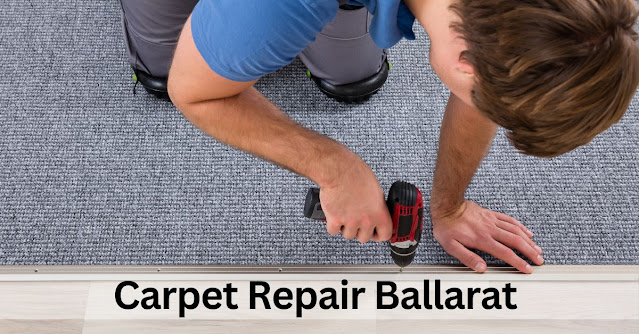How to Cover Holes in a Carpet?
- Get link
- X
- Other Apps
Carpet, though a beloved flooring choice for many, can sometimes fall victim to wear and tear, resulting in unsightly holes. Whether it's due to heavy foot traffic, pet damage, or accidents, discovering a hole in your carpet can be distressing. However, fear not! There are several effective methods for covering up these imperfections and restoring the beauty of your carpet. In this guide, Carpet Repair Pakenham explores various techniques to help you tackle this common household issue.
Assess the Damage
The first step in addressing holes in your carpet is to assess the extent of the damage. Determine the size and severity of the hole to better understand which method of repair will be most suitable.
Gather Your Materials
Before diving into the repair process, gather all the necessary materials. You'll typically need scissors, replacement carpet, carpet adhesive, a carpet patch kit, double-sided carpet tape, a utility knife, a straight edge, and a vacuum cleaner.
Trim the Edges
Carefully trim any frayed edges around the hole using scissors. Remove any loose fibers to create a clean surface for repair.
Use a Carpet Patch Kit
For larger holes, a carpet patch kit can be an effective solution. Start by cutting a piece of replacement carpet from an inconspicuous area, such as inside a closet. Ensure that the patch is slightly larger than the hole to allow for proper blending. Apply carpet adhesive to the patch and press it firmly into place. Use a heavy object to weigh down the patch as it dries.
Employ Carpet Tape
For smaller holes or tears, double-sided carpet tape can provide a quick and easy fix. Cut a piece of tape to fit the size of the hole and press it firmly onto the damaged area. Then, carefully place a matching piece of carpet over the tape, ensuring a seamless blend.
Opt for Professional Repair
If you're dealing with extensive damage or need clarification on your DIY skills, it may be best to seek professional help. Carpet repair specialists have the expertise and tools to effectively address holes and tears in your carpet, leaving it looking as good as new.
Prevention Tips
Once you've repaired the holes in your carpet, it's essential to take steps to prevent future damage. Consider placing area rugs or mats in high-traffic areas to reduce wear and tear. Additionally, regular vacuuming and prompt cleaning of spills can help prolong the life of your carpet.
Conclusion
Discovering holes in your carpet can be a frustrating experience, but with the right tools and techniques, you can effectively repair the damage and restore the beauty of your flooring. Whether you opt for DIY methods or seek professional assistance, addressing carpet holes promptly is key to maintaining a pristine home environment. By following the steps outlined in this guide and taking preventive measures, you can enjoy your carpet for years to come.
- Get link
- X
- Other Apps


.jpg)
Comments
Post a Comment